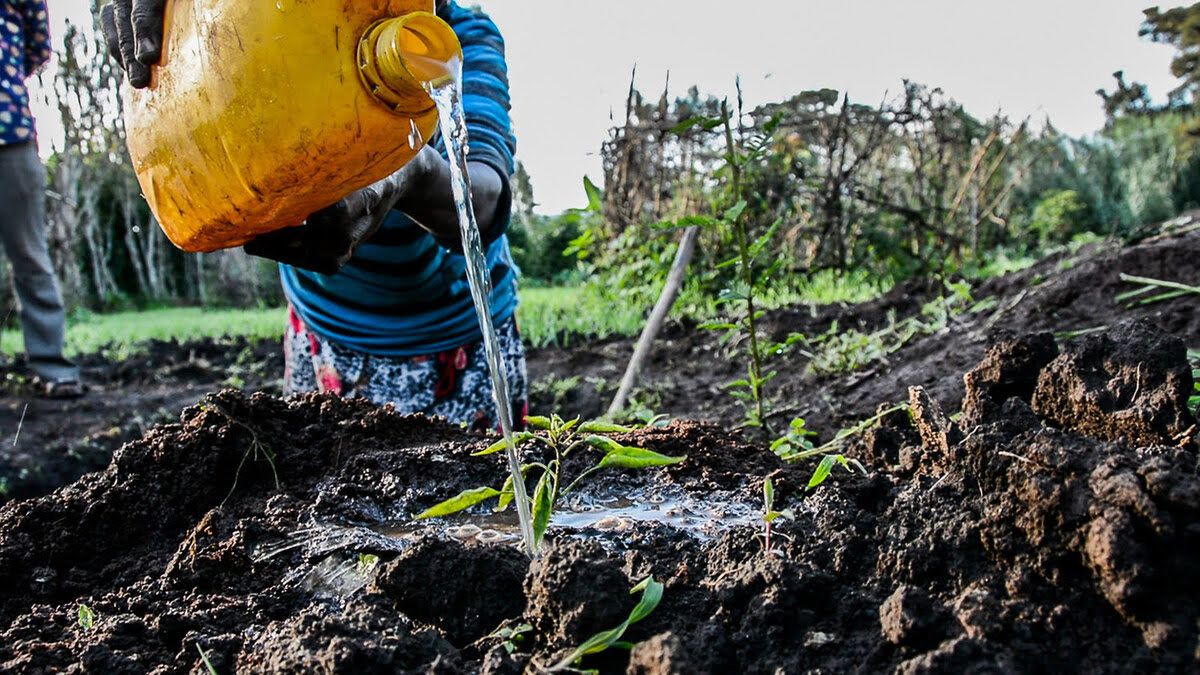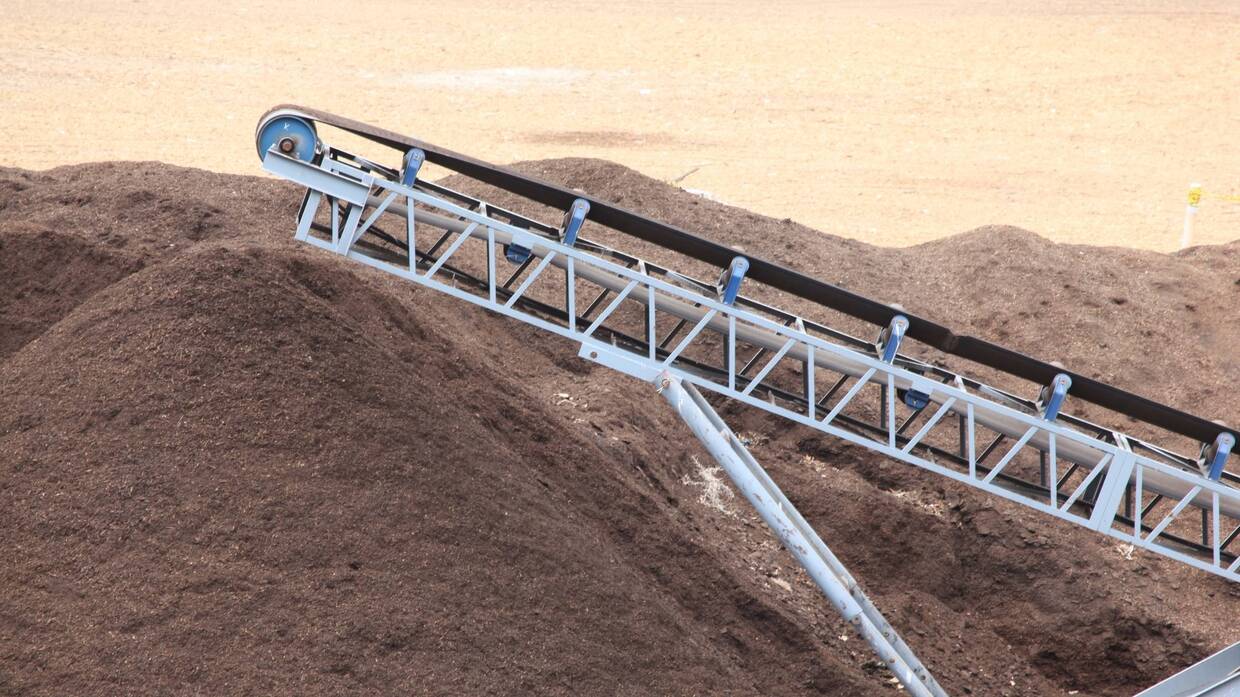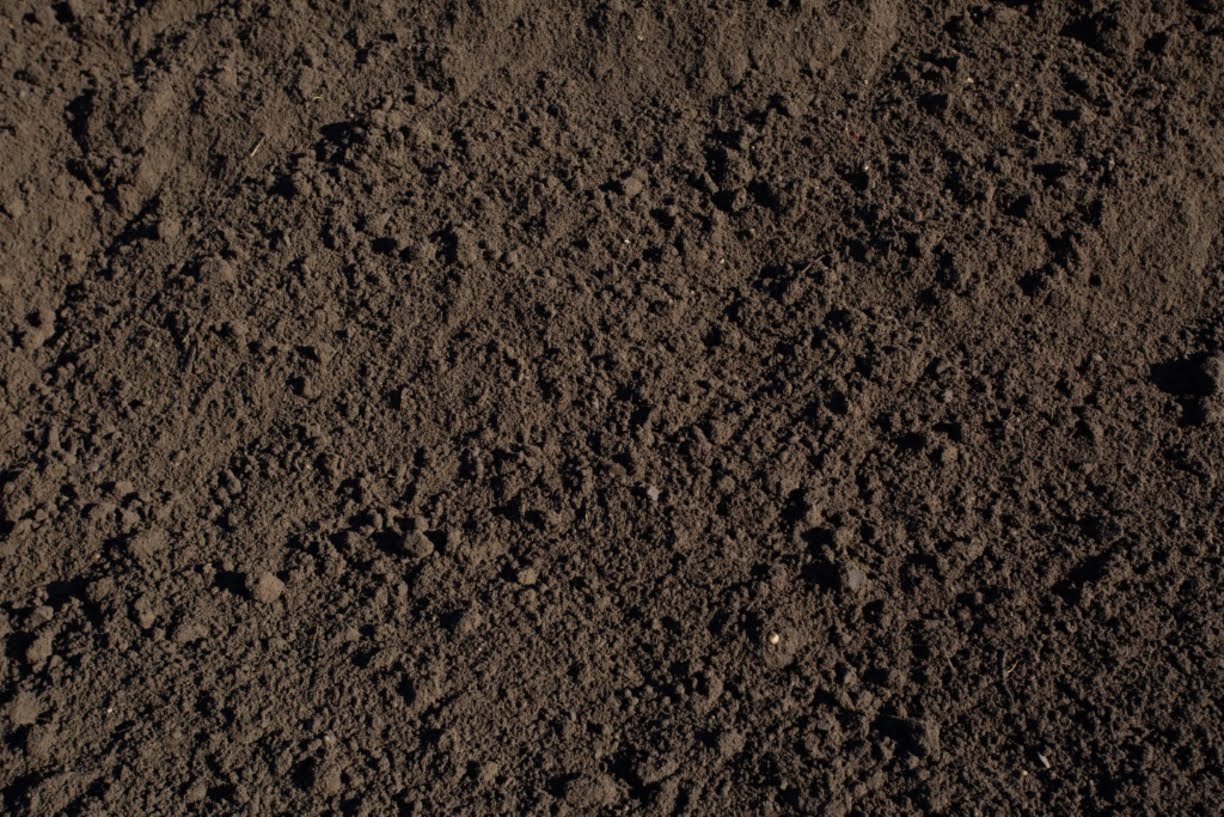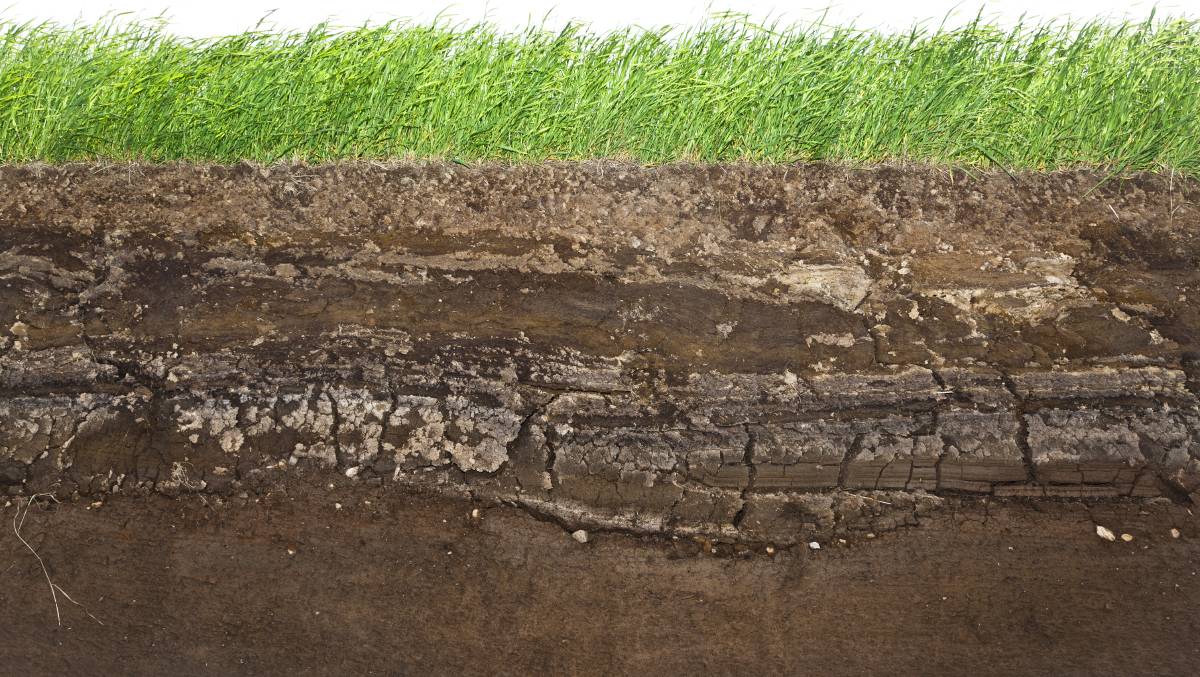Home>Gardening News and Trends>Latest News>Which Is A Land Management Technique That Limits Topsoil Loss?


Latest News
Which Is A Land Management Technique That Limits Topsoil Loss?
Modified: January 22, 2024
Discover the latest news on effective land management techniques that help limit topsoil loss, ensuring sustainable agricultural practices and environmental conservation.
(Many of the links in this article redirect to a specific reviewed product. Your purchase of these products through affiliate links helps to generate commission for Chicagolandgardening.com, at no extra cost. Learn more)
Table of Contents
- Introduction
- Explanation of Topsoil Loss
- Importance of Land Management Techniques
- Overview of Different Land Management Techniques
- Definition and Function of a Land Management Technique that Limits Topsoil Loss
- Benefits and Advantages of the Technique
- Case Studies and Examples of Successful Implementation
- Challenges and Limitations of the Technique
- Comparison of the Technique with Other Land Management Approaches
- Conclusion
Introduction
Topsoil loss is a significant challenge that affects agricultural productivity, ecosystem health, and overall land sustainability. It refers to the erosion and depletion of the top layer of soil, compromising its fertility and ability to support plant growth. Without effective land management techniques, topsoil loss can have devastating consequences, leading to reduced crop yields, increased sedimentation in rivers and streams, and diminished biodiversity.
Land management techniques play a crucial role in mitigating topsoil loss and promoting sustainable land use practices. These techniques encompass a range of strategies and practices designed to conserve soil, prevent erosion, and maintain soil health. By implementing these techniques, farmers, landowners, and policymakers can protect and enhance the quality of the topsoil, ensuring its long-term productivity and viability.
In this article, we will explore various land management techniques that limit topsoil loss and discuss their benefits, challenges, and real-world examples of successful implementation. By understanding the importance and functionality of these techniques, we can make informed decisions and take proactive measures to protect our precious topsoil.
Explanation of Topsoil Loss
Topsoil loss occurs when the uppermost layer of soil, rich in organic matter and essential nutrients, is eroded or degraded. This layer, commonly referred to as topsoil, is vital for sustaining plant growth and providing a habitat for soil organisms. However, various factors contribute to its loss, including erosion caused by wind, water, and human activities, as well as the depletion of nutrients through intensive farming practices.
Wind erosion occurs when strong winds blow over bare or poorly vegetated soil surfaces, lifting fine particles into the air and depositing them elsewhere. This process is particularly prevalent in arid or semi-arid regions, where the lack of protective vegetation exacerbates the problem. Water erosion, on the other hand, occurs when rainfall or irrigation water flows over the soil surface, causing detachment and transport of soil particles. Steep slopes, heavy rainfall, and inadequate soil management practices can significantly accelerate water erosion.
In addition to natural processes, human activities such as deforestation, intensive agriculture, and construction can also contribute to topsoil loss. Clearing forests for agriculture or urban development exposes the soil to erosion, as trees and vegetation no longer provide protection against wind and water. Intensive farming practices, such as monoculture and excessive tillage, can lead to soil compaction and degradation, reducing its ability to hold water and nutrients. Chemical inputs, including synthetic fertilizers and pesticides, can further degrade topsoil health by disrupting its natural balance of microorganisms and beneficial organisms.
The consequences of topsoil loss are multifaceted. In agricultural settings, it directly impacts crop productivity and reduces the efficiency of inputs, such as water and fertilizers. As topsoil is lost, the soil’s ability to retain water declines, leading to increased runoff and water pollution. The loss of nutrients from the soil can result in poor crop yields, increased reliance on synthetic fertilizers, and nutrient imbalances that affect plant and animal health. Additionally, topsoil loss has negative environmental impacts, including the loss of biodiversity and the release of carbon dioxide into the atmosphere, exacerbating climate change.
In summary, topsoil loss is a complex issue influenced by natural processes, as well as human activities. Understanding the causes and consequences of topsoil loss is essential for identifying effective land management techniques that can mitigate its impact and promote sustainable soil health.
Importance of Land Management Techniques
Land management techniques play a crucial role in addressing topsoil loss and promoting sustainable land use practices. They are essential for preserving the health and productivity of the soil, ensuring long-term food security, and protecting the environment. Here are several reasons why land management techniques are of utmost importance:
- Conservation of soil fertility: Land management techniques help maintain the fertility of the soil by preventing erosion and preserving the organic matter and nutrients present in the topsoil. By implementing practices such as cover cropping, crop rotation, and organic fertilization, farmers can replenish soil nutrients, improve soil structure, and enhance overall soil health.
- Sustainable agriculture: Land management techniques support sustainable agriculture practices by minimizing the negative environmental impacts associated with conventional farming methods. For example, practices like agroforestry, terracing, and contour plowing help reduce soil erosion, conserve water, and enhance biodiversity. These techniques promote more resilient and sustainable farming systems that can withstand climate change impacts.
- Preservation of water quality: Proper land management techniques can significantly reduce the amount of sediment, nutrients, and chemicals that enter water bodies through runoff. By implementing strategies such as buffer strips, riparian zone restoration, and conservation tillage, farmers can prevent soil and nutrient runoff, protecting water quality and maintaining healthy aquatic ecosystems.
- Climate change mitigation: Effective land management techniques can contribute to climate change mitigation by enhancing carbon sequestration in the soil. Practices like agroforestry, conservation agriculture, and rotational grazing promote the accumulation of organic matter in the soil, which serves as a carbon sink, reducing greenhouse gas emissions and helping to mitigate climate change effects.
- Enhanced biodiversity: Implementing land management techniques that promote sustainable land use can help preserve and enhance biodiversity. By preserving natural habitats, implementing agroecological practices, and creating wildlife corridors, land managers can provide shelter and resources for a wide range of plant and animal species, contributing to healthier ecosystems.
In summary, land management techniques are vital for maintaining soil fertility, promoting sustainable agriculture, protecting water quality, mitigating climate change, and preserving biodiversity. By adopting these techniques, we can ensure the long-term sustainability of our land resources and create a healthier and more resilient environment for future generations.
Overview of Different Land Management Techniques
Various land management techniques have been developed to address topsoil loss and promote sustainable land use. These techniques offer a range of approaches that can be tailored to different landscapes and agricultural systems. Here is an overview of some common land management techniques:
- Conservation Tillage: Conservation tillage minimizes soil disturbance by reducing or eliminating tillage operations. This technique helps protect the structure of the soil, reduces erosion, and enhances water infiltration. Examples of conservation tillage practices include no-till, strip-till, and ridge tillage.
- Cover Cropping: Cover crops are planted to cover the soil between cash crop seasons. These crops provide a protective cover that reduces erosion, improves soil fertility through nitrogen fixation, and enhances organic matter content. Common cover crops include legumes, grasses, and brassicas.
- Terracing: Terracing involves constructing leveled areas along curved contour lines on sloping land. This technique helps slow down the movement of water, reduces erosion, and facilitates water infiltration. Terraces can be created using physical structures or through vegetative methods, such as hedgerows or grass strips.
- Agroforestry: Agroforestry integrates trees with agricultural crops or livestock. Trees provide multiple benefits, including improving soil structure, reducing erosion, enhancing biodiversity, and providing shade and windbreaks. Common agroforestry practices include alley cropping, windbreaks, and silvopasture.
- Conservation Buffer Strips: Buffer strips are areas of vegetation, such as grasses or trees, planted along the edges of fields or water bodies. They serve as buffers that trap sediment, filter pollutants, and prevent runoff, protecting water quality and preserving natural habitats.
- Organic Farming: Organic farming practices prioritize the use of natural inputs and techniques to promote soil health and reduce environmental impact. This includes avoiding synthetic pesticides and fertilizers, practicing crop rotation and cover cropping, and integrating biological pest management.
Each of these land management techniques offers unique advantages and can be combined to create integrated systems that fit specific agricultural contexts. It is important to evaluate and consider factors such as soil type, climate, crop selection, and farm size when implementing these techniques to ensure their effectiveness and success.
Definition and Function of a Land Management Technique that Limits Topsoil Loss
One effective land management technique that plays a critical role in limiting topsoil loss is contour plowing. Contour plowing is a method of farming where plowing is done along the contour lines of sloping land rather than straight up and down the slope. This technique helps to prevent erosion by minimizing the speed at which water flows down the slope, reducing the likelihood of soil being carried away.
Contour plowing works by creating small ridges or furrows that follow the natural contours of the landscape. By plowing across the slope rather than up and down, water is trapped by these ridges, allowing it to slowly infiltrate the soil rather than rapidly flowing downhill. This method also helps to minimize soil disturbance, as the plowing is done at a shallow depth, preserving the integrity of the topsoil.
In addition to reducing erosion, contour plowing offers several other benefits. First, it helps to conserve moisture by creating ridges that trap water and prevent runoff. This is particularly beneficial in areas with limited water resources or during periods of drought. Second, contour plowing helps to improve soil health by preventing compaction and allowing for better root penetration. The ridges created by contour plowing also provide a natural barrier for wind, reducing the risk of wind erosion.
Contour plowing is especially effective in hilly and sloping terrains, where the potential for erosion is high. By implementing this technique, farmers can minimize soil loss, maintain soil fertility, and optimize crop production. Contour plowing can be combined with other land management practices, such as cover cropping or conservation tillage, to further enhance erosion control and soil conservation efforts.
However, it’s important to note that contour plowing may not be suitable for all landscapes and farming systems. Factors such as soil type, slope gradient, and the types of crops being grown need to be considered. In cases where contour plowing is not practical, alternative techniques such as terracing or strip cropping may be more appropriate.
Overall, contour plowing is a valuable land management technique that effectively limits topsoil loss by preventing erosion and promoting sustainable soil health. By implementing this technique strategically, farmers and landowners can protect their valuable topsoil and ensure the long-term productivity and sustainability of their lands.
Benefits and Advantages of the Technique
Contour plowing, as a land management technique, offers numerous benefits and advantages for mitigating topsoil loss and promoting sustainable agriculture. Here are some key benefits of implementing contour plowing:
- Erosion Control: One of the primary benefits of contour plowing is its ability to effectively control erosion. By plowing along the contour lines of sloping land, water flow is slowed down, reducing the risk of soil being carried away by runoff. This helps to preserve the integrity of the topsoil, preventing erosion-induced soil loss and maintaining soil fertility.
- Water Conservation: Contour plowing helps conserve water by trapping it in ridges and furrows. This reduces runoff and encourages water infiltration into the soil, allowing it to be stored and utilized by plants. Water conservation is particularly important in areas with limited water resources or during dry periods, as it reduces the dependence on irrigation and ensures a more efficient use of water.
- Soil Health: By minimizing soil disturbance, contour plowing helps to improve soil structure and health. Shallow plowing prevents compaction, allowing for better root penetration and nutrient uptake by plants. Furthermore, the ridges created by contour plowing serve as natural windbreaks, protecting the soil from wind erosion and preserving its quality.
- Sustainable Crop Production: Contour plowing promotes sustainable crop production by preventing soil erosion and maintaining soil fertility. By preserving the topsoil and its nutrient-rich composition, farmers can optimize the growth and yield of their crops. This not only improves agricultural productivity but also reduces the need for synthetic fertilizers and enhances the long-term sustainability of the farm.
- Cost-Effective Solution: Implementing contour plowing can be a cost-effective solution for erosion control. It requires minimal investment in terms of equipment and materials, making it accessible to farmers with limited resources. Additionally, the reduction in soil erosion and the subsequent preservation of topsoil can lead to long-term cost savings by reducing the need for soil erosion remediation and improving crop productivity.
- Environmental Sustainability: By limiting topsoil loss and promoting soil conservation, contour plowing contributes to environmental sustainability. It helps to prevent sedimentation in water bodies, reducing water pollution and preserving aquatic ecosystems. Moreover, the conservation of soil nutrients and organic matter aids in carbon sequestration, mitigating climate change impacts and promoting a healthier environment.
Overall, contour plowing offers a range of benefits and advantages, including erosion control, water conservation, improved soil health, sustainable crop production, cost-effectiveness, and environmental sustainability. By implementing this technique, farmers can effectively mitigate topsoil loss and foster a more sustainable and resilient agricultural system.
Case Studies and Examples of Successful Implementation
Several case studies and real-world examples demonstrate the successful implementation of contour plowing as a land management technique to mitigate topsoil loss. These examples highlight its effectiveness and the positive outcomes it has achieved in various agricultural contexts:
Case Study 1: Appalachian Highlands, United States
In the Appalachian Highlands region of the United States, contour plowing has been widely adopted to control erosion on sloping farmland. Studies have shown that contour plowing, combined with other conservation practices such as cover cropping and conservation tillage, has significantly reduced soil erosion rates in the region. The preservation of topsoil has improved soil fertility, resulting in increased crop productivity and reduced reliance on synthetic fertilizers.
Case Study 2: Machakos District, Kenya
In the Machakos District of Kenya, contour plowing has been successfully implemented to combat soil erosion and improve crop yields. Farmers in this region face arid conditions and steep slopes, making soil conservation challenging. However, through the adoption of contour plowing and other soil conservation techniques, farmers have witnessed increased water infiltration, reduced soil erosion, and improved soil moisture retention. As a result, agricultural productivity has increased, and farmers are better equipped to cope with the challenges of drought and climate variability.
Case Study 3: Loess Plateau, China
The Loess Plateau in China was once plagued by severe soil erosion, resulting in massive sedimentation in the Yellow River. Through the implementation of contour plowing, along with terracing, agroforestry, and other soil and water conservation measures, the region has experienced impressive land restoration and improved agricultural productivity. Contour plowing has played a crucial role in reducing erosion, preserving soil fertility, and enhancing water conservation, leading to improved livelihoods for local farmers and the restoration of the ecosystem.
These case studies demonstrate the effectiveness of contour plowing in diverse agroecosystems and highlight its role in reducing soil erosion, improving soil quality, and promoting sustainable agriculture. By adopting this technique in combination with other appropriate land management practices, farmers can protect their topsoil, enhance crop production, and contribute to the overall resilience and sustainability of their agricultural systems.
Challenges and Limitations of the Technique
While contour plowing is an effective land management technique for mitigating topsoil loss, it is important to be aware of its challenges and limitations. Understanding these factors can help farmers and land managers make informed decisions and implement complementary practices to maximize erosion control and soil conservation efforts. Here are some key challenges and limitations of contour plowing:
- Slope Suitability: Contour plowing is most effective on moderate slopes, typically between 2 to 10 percent. Steeper slopes may require additional erosion control measures such as terracing or vegetative stabilization to prevent soil loss effectively.
- Soil Type and Stability: Certain soil types, such as sandy soils, may be more prone to erosion even with contour plowing. Soils with poor structure or a high clay content may become easily compacted and require additional management practices to maintain soil health and prevent erosion.
- Maintenance and Adaptation: Contour plowing requires regular maintenance to ensure that the ridges and furrows remain intact and effective over time. Adjustments to the plowing pattern may be needed as the landscape changes or new cropping systems are introduced.
- Implementing in Large Fields: Implementing contour plowing in large fields can be more challenging compared to smaller plots due to the complexity of managing contours and maintaining consistent plowing patterns. Specialized equipment and skilled operators may be required for efficient implementation.
- Integration with Other Practices: While contour plowing can significantly reduce erosion, it is often more effective when combined with other land management practices such as cover cropping, conservation tillage, or terracing. Integrating complementary techniques can help maximize erosion control and enhance soil health and water conservation.
- Climate and Weather Conditions: Contour plowing may be less effective during heavy rainfall events or prolonged periods of intense rainfall. In such situations, additional measures like contour strips or grassed waterways may be necessary to divert and manage excess water flow.
It is important to assess the specific characteristics of the land, consider the limitations, and adapt contour plowing accordingly to maximize its effectiveness. Farmers and land managers should also seek guidance from local agricultural extension services or conservation organizations to ensure proper implementation and address site-specific challenges.
Despite these challenges, contour plowing remains a valuable land management technique for erosion control and soil conservation. When implemented correctly and integrated with other appropriate practices, contour plowing can contribute to improved land health, agroecosystem sustainability, and long-term agricultural productivity.
Comparison of the Technique with Other Land Management Approaches
Contour plowing is just one of the many land management approaches available for mitigating topsoil loss and promoting sustainable land use. Each approach has its own advantages and limitations, so it is essential to consider their respective features when selecting the most appropriate technique for a particular context. Here is a comparison of contour plowing with other commonly used land management approaches:
Contour Plowing vs. Terracing
Terracing involves constructing leveled areas along the contour lines on sloping land. Unlike contour plowing, which follows the existing land contours, terracing creates artificial steps or flat surfaces. While contour plowing is relatively simpler to implement, terracing requires more engineering and construction effort. However, terracing provides greater control over water flow and erosion, making it more suitable for steep slopes and regions prone to intense rainfall. Both techniques are effective in reducing erosion but require careful planning and maintenance.
Contour Plowing vs. Conservation Tillage
Conservation tillage refers to techniques that reduce or eliminate soil disturbance during planting and cultivation. This includes practices like no-till and strip tillage. While contour plowing focuses on managing water flow and reducing erosion, conservation tillage aims to conserve soil moisture, improve soil structure, and reduce soil erosion through minimal soil disturbance. Both techniques contribute to soil conservation and enhance water infiltration. However, conservation tillage may have a higher learning curve and require specialized equipment.
Contour Plowing vs. Mechanical Systems
Mechanical systems, such as terracing machinery or water diversion structures, are used to modify the landscape for erosion control. While these systems can be effective in managing runoff and erosion, they often require significant capital investment and may not be suitable for small-scale farming operations. Contour plowing, on the other hand, can be implemented with basic farming equipment, making it more accessible and cost-effective for many farmers. However, mechanical systems may provide better control over water movement and erosion in certain landscapes.
Contour Plowing vs. Agroforestry
Agroforestry combines agricultural crops or livestock with trees, offering multiple benefits, including erosion control, improved soil fertility, and biodiversity conservation. While contour plowing focuses primarily on erosion control, agroforestry has broader environmental benefits, such as carbon sequestration and habitat creation. Agroforestry systems require a longer-term commitment due to the establishment and management of trees. Contour plowing can be a complementary practice implemented within an agroforestry system to prevent erosion on annual crop areas.
Ultimately, the choice of land management approach depends on various factors, including the landscape characteristics, soil conditions, climate, available resources, and farm scale. Integration of multiple techniques may often yield the best results, harnessing the strengths of each approach. It is important to carefully evaluate the specific needs and goals of the land, seek expert advice, and adapt the approach accordingly for sustainable and effective soil conservation efforts.
Conclusion
Topsoil loss is a critical issue that jeopardizes agricultural productivity, ecosystem health, and land sustainability. Implementing effective land management techniques is essential for mitigating topsoil loss and promoting sustainable land use practices. Among these techniques, contour plowing stands out as an effective approach for controlling erosion and preserving the integrity of the topsoil.
By plowing along the contour lines of sloping land, contour plowing helps to slow down water flow, reducing the risk of soil being carried away. It offers numerous benefits, including erosion control, water conservation, improved soil health, sustainable crop production, cost-effectiveness, and environmental sustainability.
However, contour plowing is not without its challenges and limitations. Factors such as slope suitability, soil stability, and the need for maintenance must be taken into account. Integration with other land management practices, considering the specific characteristics of the land, and adapting the technique accordingly can maximize its effectiveness.
When comparing contour plowing with other land management approaches, it is evident that each technique has its own advantages and limitations. Terracing provides greater control over water flow on steep slopes, conservation tillage focuses on minimizing soil disturbance, mechanical systems offer precise control over erosive forces, and agroforestry provides broader environmental benefits.
In conclusion, contour plowing plays a vital role in limiting topsoil loss and promoting sustainable agriculture. By carefully implementing this technique and complementing it with other appropriate approaches, farmers and land managers can preserve the health and productivity of the soil, protect water resources, enhance biodiversity, and contribute to the long-term sustainability of our land resources.







